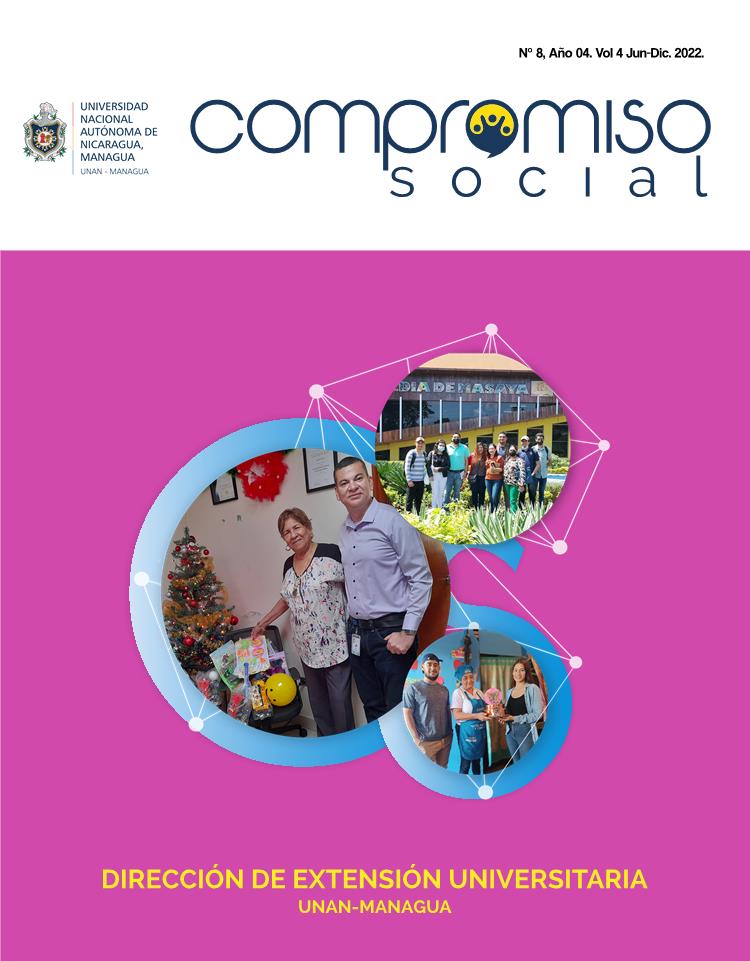Theoretical-methodological notes on memory and historical-cultural heritage in Managua
DOI:
https://doi.org/10.5377/recoso.v4i8.18614Keywords:
State of the art, historical memory, oral history, cultural heritage, local developmentAbstract
This writing presents the state of the art as something more than a simple technique; an investigation of new meanings, which transcends the descriptive level of the data to establish new relations of interpretation between the categories of the object of study in the different investigative productions and create new perspectives of research and training. For this purpose, a conceptual approach on collective memory, history, heritage and local development is outlined; and as a central approach it is proposed that alternative research articulates three essential elements. In this sense, it is suggested to advance in the theoretical and methodological field of the state of the art as a proposal for a critical look at methodological strategies of the object of study that promote participation, visibility and incorporation of memory as a fundamental axis for the construction of an identity. that contributes to local development on a micro scale.The state of the art requires a hermeneutical and critical analysis of its object of study for the transformation of its meaning, in a way that allows it to overcome the technical vision of analysis of the investigated knowledge, fulfilling a bilateral function both for the enrichment of history and collective memory critically analyzing the main theoretical-methodological notes and in turn validating the idea that it becomes the backbone of the development of investigative practices around the construction of contextualized scientific literature, relevant and according to the local realities of a country
Downloads
References
Alegría, C.; Flakoli, DJ. (1982) Nicaragua: la revolución sandinista. Una crónica política/1855-1979. Serie popular Era, México.
Antognazzi, I. (1995) La vida adentro de las cárceles durante la dictadura militar del 76. Más precisamente la vida en la cárcel de Mujeres de Villa Devoto, Unidad Penitenciaría No. 2 de Capital Federal, en Antognazzi, Irma y Ferrer, Rosa. (comp.) Del Rosariazo a la democracia del ’83 (la libertad está de este lado. Rosario (Argentina), Escuela de Historia de la Facultad de Humanidades.
Aróstegui, J. (2004). La Historia vivida. Sobre la historia del presente. Editorial Alianza Ensayo, Madrid.
Folguera, Crespo, P. (1994) Cómo se hace historia oral. Ed. EUDEMA S.A.
Jiménez, S. (2009). La construcción del estado del arte en la formación para la investigación en el posgrado en educación. En el posgrado en Educación en México. México: Universidad Nacional Autónoma de México - iisue.
Lozano, M. Gómez, M. & Hewitt, N. (1998) Estado de arte de las investigaciones, estudios y escritos sobre evaluación del aprendizaje en Santa Fe de Bogotá en la década de 1987-1997. Bogotá: idep.
Garcés, M. (2002) Recreando el pasado: Guía metodológica para la memoria y la historia local. Ed. ECO. Santiago de Chile (pág. 5-6)
Páramo, P. (2008). La investigación en las ciencias sociales. Técnicas de recolección de información. Bogotá: Universidad Piloto de Colombia.
Schwarzstein, D. (1995). “La historia Oral en América Latina”, en Historia y fuente oral, No.14, Barcelona.
Thompson, P. (1988) La voz del pasado. Historia Oral. Valencia, Alfons El Magnanim
Downloads
Published
Issue
Section
License
Copyright (c) 2022 Universidad Nacional Autónoma de Nicaragua, Managua(UNAN-Managua)

This work is licensed under a Creative Commons Attribution-NonCommercial-ShareAlike 4.0 International License.




